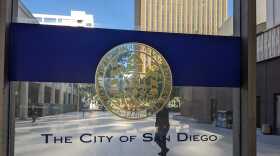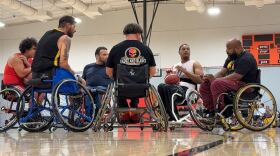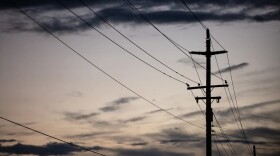People are always asking me: "How are the birth of baby Jesus and the U.S. Navy connected with mid-century graphic design in San Diego?"
Well, the answer is simple. Military and aerospace contractors like Convair were the largest employers in San Diego during World War II. Towards the end of the war, the Navy's small Radio and Sound Laboratory began to work with scientists from the University of California at Scripps Institution of Oceanography to research and develop electronic equipment and systems for the Navy and this new entity, called the Navy Electronics Laboratory (NEL), based in Point Loma. In 1945, educator and proponent of contemporary art, John Olsen, was in charge of visual development at NEL. He led a team of teachers, scientists, writers and artists responsible for illustrating and documenting the lab's projects. Their job was to make this technical information easy to understand through words and pictures. Just a few of the artists who worked at NEL included Harry Bertoia, Ethel Greene, Jim Boynton and Tom Gould. Gould studied at San Diego State College and worked at both NEL and Astro; he also designed appealing brochures for the San Diego Art Guild.
Mid-century graphic design is an important element of Mingei International Museum's exhibition, "San Diego's Craft Revolution: From Post-War Modern to California Design." A special display is dedicated to posters, advertisements, exhibition announcements and invitations related the Allied Craftsmen of San Diego and the city's contemporary art scene. A collection of inventive, artist-made greeting cards (mostly Christmas cards) will also be included. These holiday cards were extremely popular with members of the Allied Craftsmen, regardless of their primary medium. Many members of San Diego's foremost contemporary craft group exchanged specially designed and printed cards every year. This graphic phenomenon was reported as "A Trend In Personal Greetings" in the San Diego Union in December of 1962.
But some of the best graphic design done in San Diego during the 1950s and 1960s was done by three members of the Allied Craftsmen who worked at NEL.
Barney Reid became head of the graphic design section at NEL while exhibiting enamels, jewelry, ceramics and screen printed fabric with the Allied Craftsmen. Reid designed many of the Allied Craftsmen's invitations and announcements and had other graphic design clients, such as the Rancho La Puerta and Golden Door health spas. Having focused on lithography as a student, Reid worked primarily with intaglio printmaking after the late 1970s.
While studying art at Long Beach State College, Jim Sundell met John Olsen. The former NEL director was chairman of the art department at Long Beach State and recommended that Sundell apply for a job at NEL after college. Sundell and his family moved to Point Loma and he worked at NEL until his retirement. He joined the Allied Craftsmen in the mid-1950s and exhibited fabricated silver and ebony jewelry as a member. Sundell was also active in the San Diego Art Guild and exhibited paintings and sculpture with the group.
Dave Hampton is a frequent contributor to Culture Lust. He is the curator of "San Diego's Craft Revolution: From Post-War Modern To California Design" at the Mingei Museum in Balboa Park.





